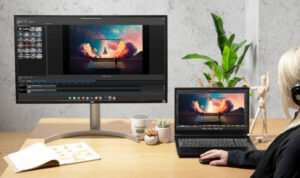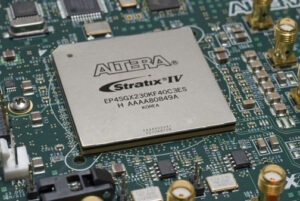Nobody seems to want to talk about the desktop anymore. It seems that the trend followers have jumped to the next biggest thing. The glamor now isn’t in desktops and laptops, machines that do all the necessary grunt work, but in gee-whiz tablets and smart phones. This isn’t necessarily a bad thing, but desktops and laptops aren’t going to go away soon – not as long as there’s work to be done.
I mention this because it seems that many of the folks who write about Linux have all but given up efforts to increase the penguin’s share of the installed base. I find this curious, because I think we’ve never been better positioned to get folks to make the leap to Linux.
We’ve got plenty in our favor right now. Because of tablets and smart phones, where Microsoft products are practically unknown, people are no longer afraid of trying out new operating systems. At the same time, the folks in Redmond are rapidly loosing their grip. The specter that was Vista continues to cast a long shadow over the company, and users may have found Windows 7 to be functional, but there was nothing there to get them excited. Now Windows 8 is getting ready to be dumped on the market, with a default GUI that will be strange and ugly on large desktop and laptop screens. Apple’s Mac line doesn’t offer an alternative for most users – whether corporate or consumer – simply because they’re too expensive.
What we’re lacking are well known computer brands offering Linux already installed. The average user isn’t going to buy a new computer just so he or she can install an operating system. Hell, I’m something of a geek, and even I don’t install OS’s any more than absolutely necessary. Right now I have a laptop with an installation of PCLOS that’s so out of date that a clean install would be the best way to bring it up to speed. That’s on my todo list. It’s been on my todo list for two years now. In other words, it’s a round tuit.
Although Dell and some of the other brands do offer Linux as an option on one or two models, they don’t ship them to stores, they don’t push them, and their Linux installs are so crappy that you have to be a geek familiar with the command line to get them to work properly when you first fire them up. This may be little more than an aggravation for you and me, but it’s completely unacceptable for the average computer user who prefers to get work done rather than figuring out how to get the wifi to work first. Have you ever told an average user that all they have to do is download and install a driver?
But even if we could get Dell or HP to get their act together and offer some boxes with Linux installed, properly tweeked so that everything works out of the box, they’re still not going to sell to your neighbor across the street so long as they’re only offered as a special feature buried somewhere on a back page of the manufacturers’ web sites. Even if they were stocked at your local big box store they’re not going to sell, because the sales staff will keep pointing people to their Windows machines – something we’ve seen time and again.
Linux boxes aren’t going to start to sell to the average consumer until Michael Dell or someone of his ilk gets behind them in a big way. Dell could create a market tomorrow for preinstalled Linux simply by making a television advertising pitch and putting a little “we recommend Linux Mint” graphic next to every computer offered. I’m not going to hold my breath waiting for that to happen, however.
I do have an idea I think would work, though. One that could really put a certain Linux company with deep pockets on the tech map. I’ll tell you about it on Thursday.
Christine Hall has been a journalist since 1971. In 2001, she began writing a weekly consumer computer column and started covering Linux and FOSS in 2002 after making the switch to GNU/Linux. Follow her on Twitter: @BrideOfLinux




You are right that there is a great opportunity with Windows 8 about to shake their users overboard and people’s familiarity with iOS and AndroidOS.
I think there’s a fundamental problem with Linux and Open Source at it’s core – the idea that “complicated software” is “superior software”.
Windows Search is built into the Start Menu and helps Users navigate through their Applications, Documents, and other files – Doctors, Dentists, Veterinarians, Firemen you name it don’t want to remember how to update their distro by command line. People want a pretty search box – this is also made clear by the success of Google vs Yahoo.
I recommend watching these YouTube videos from the guy from Lunduke.com
http://community.xianlabs.com/topic/9827-why-linux-sucks-lfnw-2012/
Linux is for those who deserve it. Do you really want the user base which is now using Windows (and still clinging to it)? I don’t – I work in tech support and have enough people without a clue to deal with.
At home, the only Windows installation is a virtual one in an Oracle (formerly Sun) VirtualBox – and even that one is only fired up if there’s no alternative.
But then again, I’m doing things at home without proprietary stuff since more than 10 years. So I have an excuse privately at least, where I can say: “Sorry, can’t help you, I’m running Linux here”. The rest of the greater family sooner or later migrated as well, and guess what? No phone calls with questions anymore, because things just work.
So let the geeks runs Linux, and let the Doctors, Dentists, Veterinarians, Firemen you name it cling to their Windows copies…
Thanks, but no thanks. Bad idea.
http://www.canonical.com/content/canonical-and-dell-announce-today-dell-laptops-pre-loaded-ubuntu-will-be-sold-850-retail-out 😉
The best way to get more people using Linux is to help them to it. My elder sister is an administrator’s nightmare, but seems to be happily using Ubuntu and mightily glad to be rid of MS Windows. In response to complaints about Windows, I talked a writer friend into trying Ubuntu; he’s now a zealous convert who hasn’t looked back other than to wonder why he didn’t make the change earlier.
A kid I mentor was given a Dell Mini 9 netbook that had Ubuntu on it — his Mom got it cheap in a garage sale. He’s used it without trouble for a couple of years, with Gnome2 desktop instead of the wacky default interface that it came with from the factory. Recently, he got an Android phone that could be set as a WiFi hotspot and finally, he could get connected to the Internet. Unfortunately, the first system update killed the WiFi as the Broadcom drivers were unloaded. I couldn’t get it going, so upgraded him to CrunchBang Linux — the kid’s 16 years old now and took to it like a duck to water. His only problem is the limited 8Gbyte SSD.
Help GNU-Linux take over the desktop one person at a time. If we each get a few people to change, before long we will have conquered the world.
@Wolfgang Lonien
The discussion is about Linux for Desktops. If you wanna be a hipster and walk around among your friends and family as the “Smart” kid go ahead – but don’t hold the open source community back from innovating and simplifying their Linux Distributions and Linux Apps for people who don’t enjoy spending hours on end a day learning about every detail of their OS.
I firmly believe that if you or anyone had to explain how to to configure FStab Mount Points or X11 video configuration over the phone using VIM you’d feel like fire ants are crawling up your spine.
Your assertion that things “just work” is absurd.
Linux on the desktop is a mess. KDE4 vs Unity vs Gnome3 vs Gnome 2 vs XFCE. Half the apps you want are in kde, the other half in gtk2 and gtk3 each with different theming. In 2012 nobody wants to program C++ the worlds worst OO language. Most people are doing C# and Objective-C. I use linux on the server but switched to Mac and I now program in Objective-C. For server stuff I like linux, but desktop linux forget it, its dead.